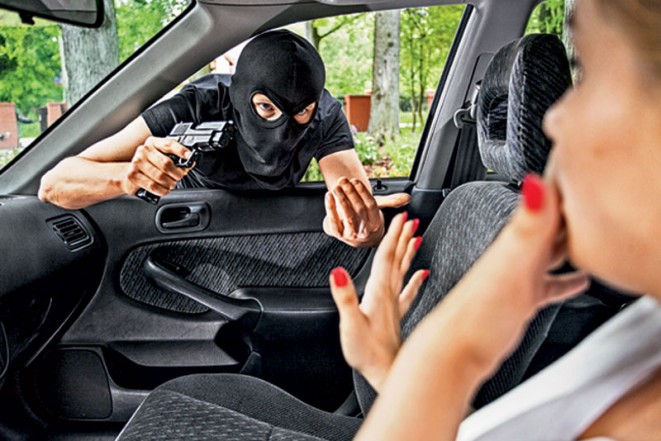Carjacking occurs when someone steals a motor vehicle from another person by use of force or intimidation.Victims of carjacking can be kidnapped, injured, and even killed. The best way to protect yourself from this scenario is to always stay alert and be aware of your surroundings. Prevention is key, so learn safety tips before anything bad has a chance to happen!
1. Keep your car tuned up and full of gas.
“E” does not stand for “Enough to get me where I need to go.” Keep your car full of gas and in good working condition. If your car is not tuned up and breaks down, it can make you a sitting duck for carjackers.
- Check your tires once a month and before you take a trip. Look for wear, damage, or low air.
2. Know your neighbors.
Knowing your neighbors will help you recognize if there is a suspicious vehicle or individual around. If you see an unfamiliar person loitering or a strange vehicle repeatedly cruising in the neighborhood, this is considered a “suspicious activity.” Don’t go home. Report the activity to local police and drive around the block; come back to your driveway when that person has left.
- Reporting suspicious activity and unusual events or incidents to the authorities can reduce crime and make your community safer.
3. Avoid trouble spots and driving in unfamiliar areas.
Avoid high crime areas, rural areas with less populated roads, and congested traffic spots. Look for a navigation app with the safety feature of avoiding high crime spots.If you notice a lot of cars in disrepair, graffiti, liquor stores, check-cashing stores, or tire skid marks on the street, you may be in a bad neighborhood.
4. Take extra care when parking in commercial areas.
According to a recent survey, 25% of all carjackings happen in parking lots, parking garages or near commercial areas. Park in a spot close to the building’s main entrance and under a lot of light, avoiding areas that are visually obstructed by walls or large plants. Don’t sit in the car and go through receipts or have a conversation on the phone or with your child in the backseat. Get in, lock the doors and go.
- Don’t put your seatbelt on while pulling out of a space. If something happens, you may need to get out of your car quickly. Instead, belt yourself as soon as you are out of the space and ready to drive.
- In parking garages, park close to the exit and back into the space. It’s easier to drive forwards than backwards in an emergency.
5. Check your mirrors for anyone possibly following you.
If you think you are being followed, make false turns. If the driver behind you continues to pursue, go to your nearest police station.
6. Stay alert at intersections.
Stay in the center lane when possible. Don’t turn your attention to a cell phone or radio. Observe 360 degrees around you through your mirrors and windows. Keep distance between your car and the one in front of you. This enables you to get around the car in front of you if it stalls or if someone suspicious approaches your car.
- Keep about one-half of the length of your vehicle between you and the vehicle ahead of you, so that you can maneuver out if necessary. As a rule of thumb, you should be able to see the rear tires of the vehicle ahead of you.








